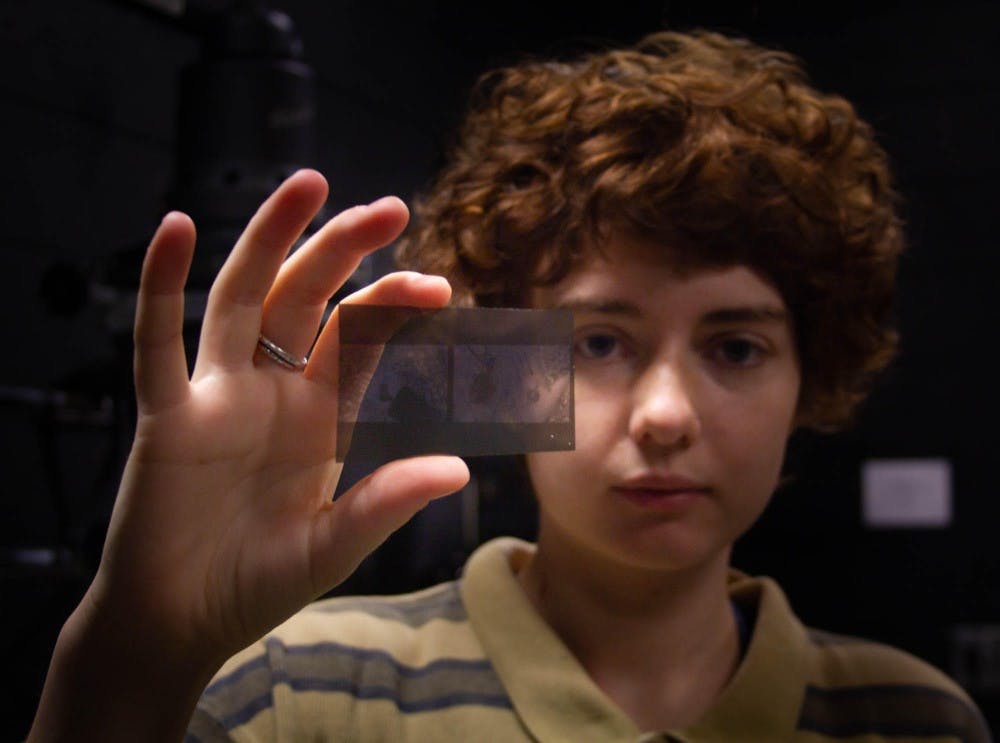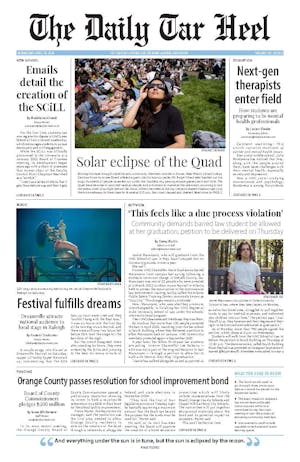Following a line of stick-on glow-in-the-dark stars, UNC student Sophie Payne walks through the dark serpentine entrance to the gang darkroom. She walks sure-footedly through the dim orange glow cast by the safelight to her work station surrounded by the trickling sound of running water.
She switches on her enlarger’s light and slides her litho film into place. Crisp black and white images of hands holding various stones are projected on the easel below it.
“I always push my film, which means that my film has more contrast,” Payne said. “I like blacks and whites. I don't like as many grays, so a lot of my images are intense.”
Payne is a sophomore in the advanced darkroom photography class offered through the art department at UNC. The class teaches students techniques, like pseudo-solarization and the use of high contrast litho film, for experimentation in a more hands-on, artistic approach to photography.
Pseudo-solarization is the intentional re-exposure of a print to light after it has been washed in developer chemicals to invert the blacks and whites of the print and create an effect of hard white lines around the image's subject. Litho film allows the developer to achieve higher contrast and eliminate gray tones in the final print.
“I really like the slow way of working,” said Gesche Würfel, professor of the advanced darkroom class. “You always have something to do with your hands, and you don't really notice that time goes by, at times, quite fast.”
The small class is open to students with interests outside of studio arts.
Bryan Cereijo, a college award-winning photographer and master's student in visual communication at UNC, specializes in documentary work.
He said this class helps him draw inspiration from the more artistic side of photography, so he can incorporate that artistry into his documentary work. Capturing a moment with an image is a way for him to actively preserve history.



